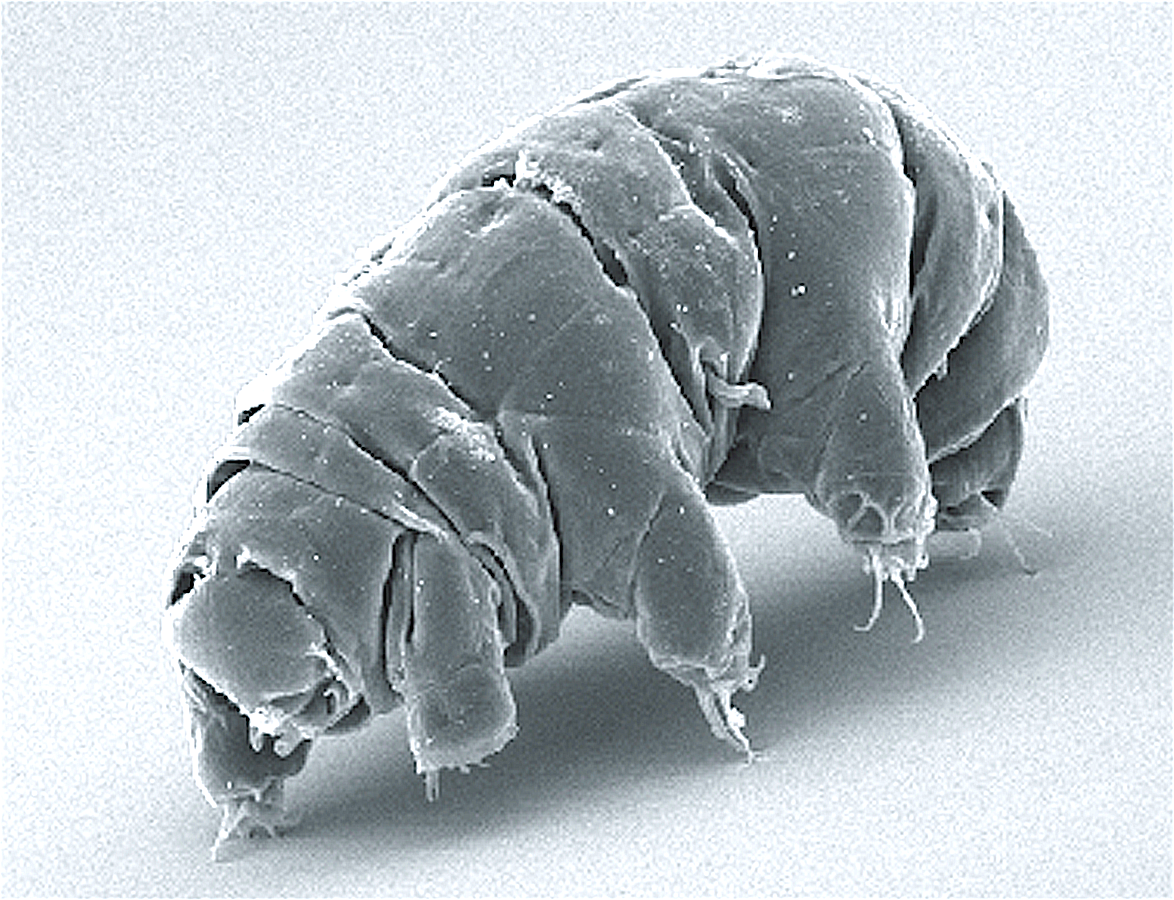Space dust may transport life between worlds
November 26, 2017

Imagine what this amazingly resilient microscopic (0.2 to 0.7 millimeter) milnesium tardigradum animal could evolve into on another planet. (credit: Wikipedia)
Life on our planet might have originated from biological particles brought to Earth in streams of space dust, according to a study published in the journal Astrobiology.
A huge amount of space dust (~10,000 kilograms — about the weight of two elephants) enters our atmosphere every day — possibly delivering organisms from far-off worlds, according to Professor Arjun Berera from the University of Edinburgh School of Physics and Astronomy, who led the study.
The dust streams could also collide with bacteria and other biological particles at 150 km or higher above Earth’s surface with enough energy to knock them into space, carrying Earth-based organisms to other planets and perhaps beyond.
The finding suggests that large asteroid impacts may not be the sole mechanism by which life could transfer between planets, as previously thought.
“The streaming of fast space dust is found throughout planetary systems and could be a common factor in proliferating life,” said Berera. Some bacteria, plants, and even microscopic animals called tardigrades* are known to be able to survive in space, so it is possible that such organisms — if present in Earth’s upper atmosphere — might collide with fast-moving space dust and withstand a journey to another planet.**
The study was partly funded by the U.K. Science and Technology Facilities Council.
* “Some tardigrades can withstand extremely cold temperatures down to 1 K (−458 °F; −272 °C) (close to absolute zero), while others can withstand extremely hot temperatures up to 420 K (300 °F; 150 °C)[12] for several minutes, pressures about six times greater than those found in the deepest ocean trenches, ionizing radiation at doses hundreds of times higher than the lethal dose for a human, and the vacuum of outer space. They can go without food or water for more than 30 years, drying out to the point where they are 3% or less water, only to rehydrate, forage, and reproduce.” — Wikipedia
** “Over the lifespan of the Earth of four billion years, particles emerging from Earth by this manner in principle could have traveled out as far as tens of kiloparsecs [one kiloparsec = 3,260 light years; our galaxy is about 100,000 light-years across]. This material horizon, as could be called the maximum distance on pure kinematic grounds that a material particle from Earth could travel outward based on natural processes, would cover most of our Galactic disk [the “Milky Way”], and interestingly would be far enough out to reach the Earth-like or potentially habitable planets that have been identified.” — Arjun Berera/Astrobiology
Abstract of Space Dust Collisions as a Planetary Escape Mechanism
It is observed that hypervelocity space dust, which is continuously bombarding Earth, creates immense momentum flows in the atmosphere. Some of this fast space dust inevitably will interact with the atmospheric system, transferring energy and moving particles around, with various possible consequences. This paper examines, with supporting estimates, the possibility that by way of collisions the Earth-grazing component of space dust can facilitate planetary escape of atmospheric particles, whether they are atoms and molecules that form the atmosphere or larger-sized particles. An interesting outcome of this collision scenario is that a variety of particles that contain telltale signs of Earth’s organic story, including microbial life and life-essential molecules, may be “afloat” in Earth’s atmosphere. The present study assesses the capability of this space dust collision mechanism to propel some of these biological constituents into space. Key Words: Hypervelocity space dust—Collision—Planetary escape—Atmospheric constituents—Microbial life. Astrobiology 17, xxx–xxx.
